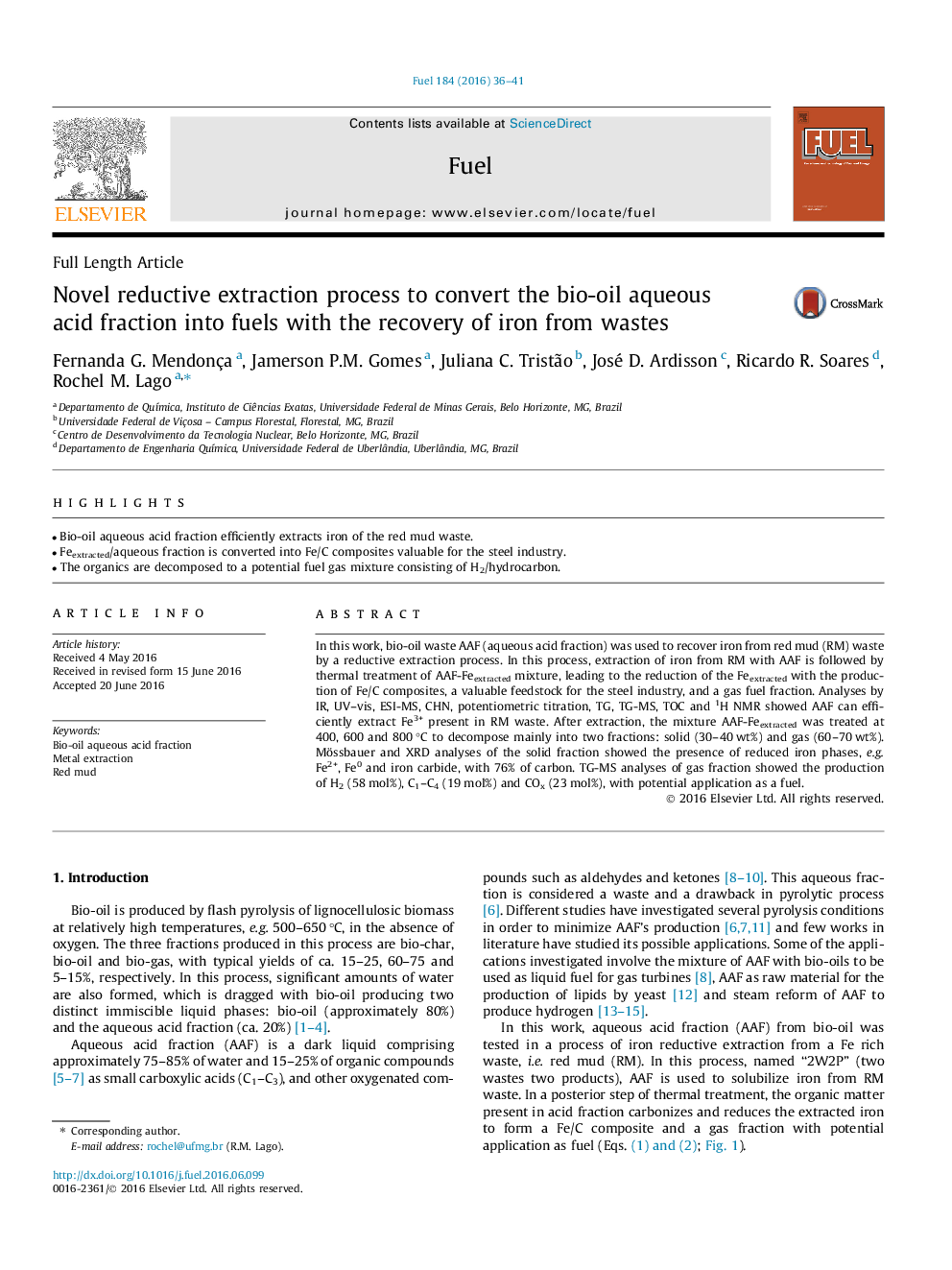| Article ID | Journal | Published Year | Pages | File Type |
|---|---|---|---|---|
| 6632933 | Fuel | 2016 | 6 Pages |
Abstract
In this work, bio-oil waste AAF (aqueous acid fraction) was used to recover iron from red mud (RM) waste by a reductive extraction process. In this process, extraction of iron from RM with AAF is followed by thermal treatment of AAF-Feextracted mixture, leading to the reduction of the Feextracted with the production of Fe/C composites, a valuable feedstock for the steel industry, and a gas fuel fraction. Analyses by IR, UV-vis, ESI-MS, CHN, potentiometric titration, TG, TG-MS, TOC and 1H NMR showed AAF can efficiently extract Fe3+ present in RM waste. After extraction, the mixture AAF-Feextracted was treated at 400, 600 and 800 °C to decompose mainly into two fractions: solid (30-40 wt%) and gas (60-70 wt%). Mössbauer and XRD analyses of the solid fraction showed the presence of reduced iron phases, e.g. Fe2+, Fe0 and iron carbide, with 76% of carbon. TG-MS analyses of gas fraction showed the production of H2 (58 mol%), C1-C4 (19 mol%) and COx (23 mol%), with potential application as a fuel.
Keywords
Related Topics
Physical Sciences and Engineering
Chemical Engineering
Chemical Engineering (General)
Authors
Fernanda G. Mendonça, Jamerson P.M. Gomes, Juliana C. Tristão, José D. Ardisson, Ricardo R. Soares, Rochel M. Lago,
